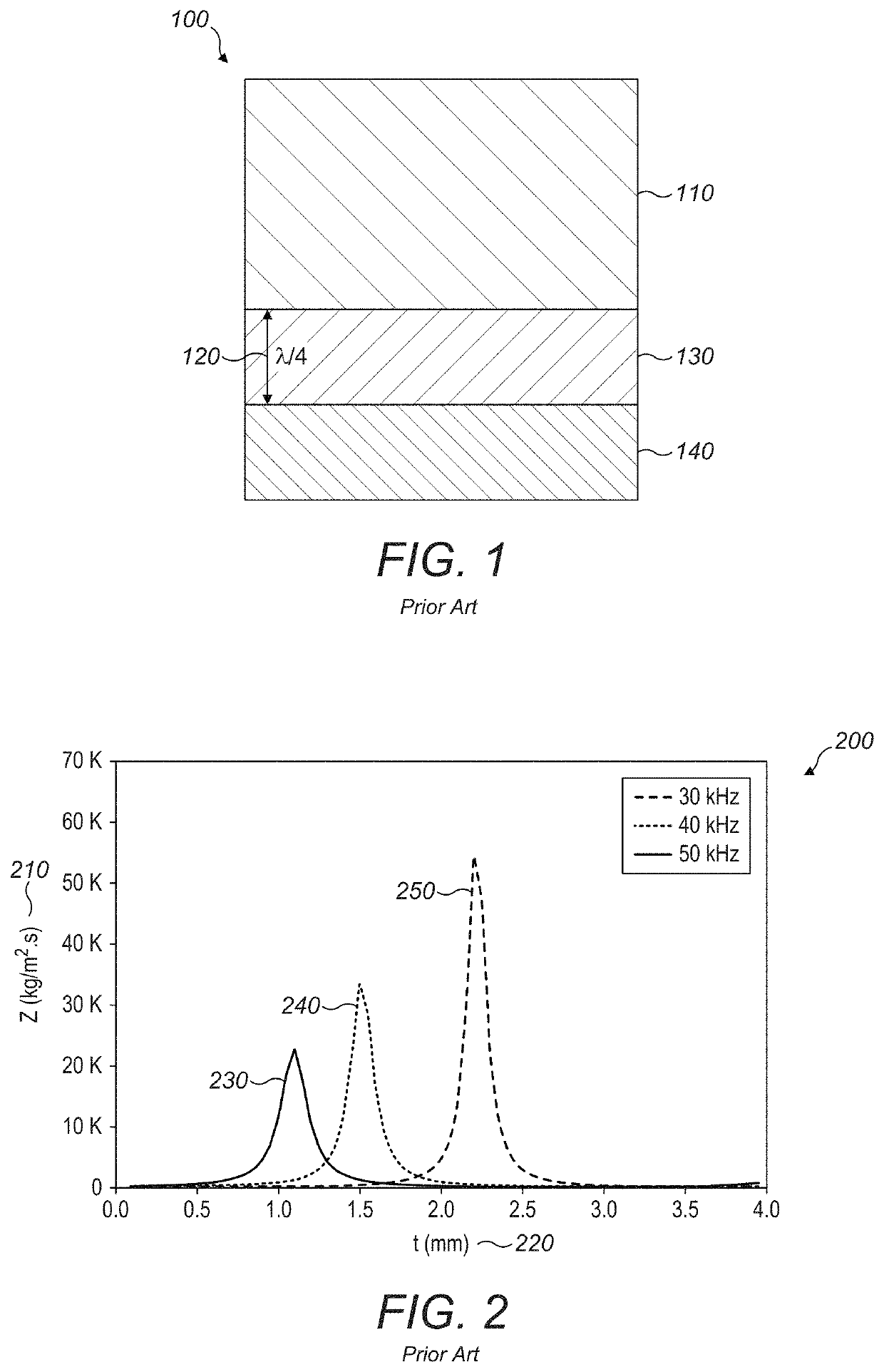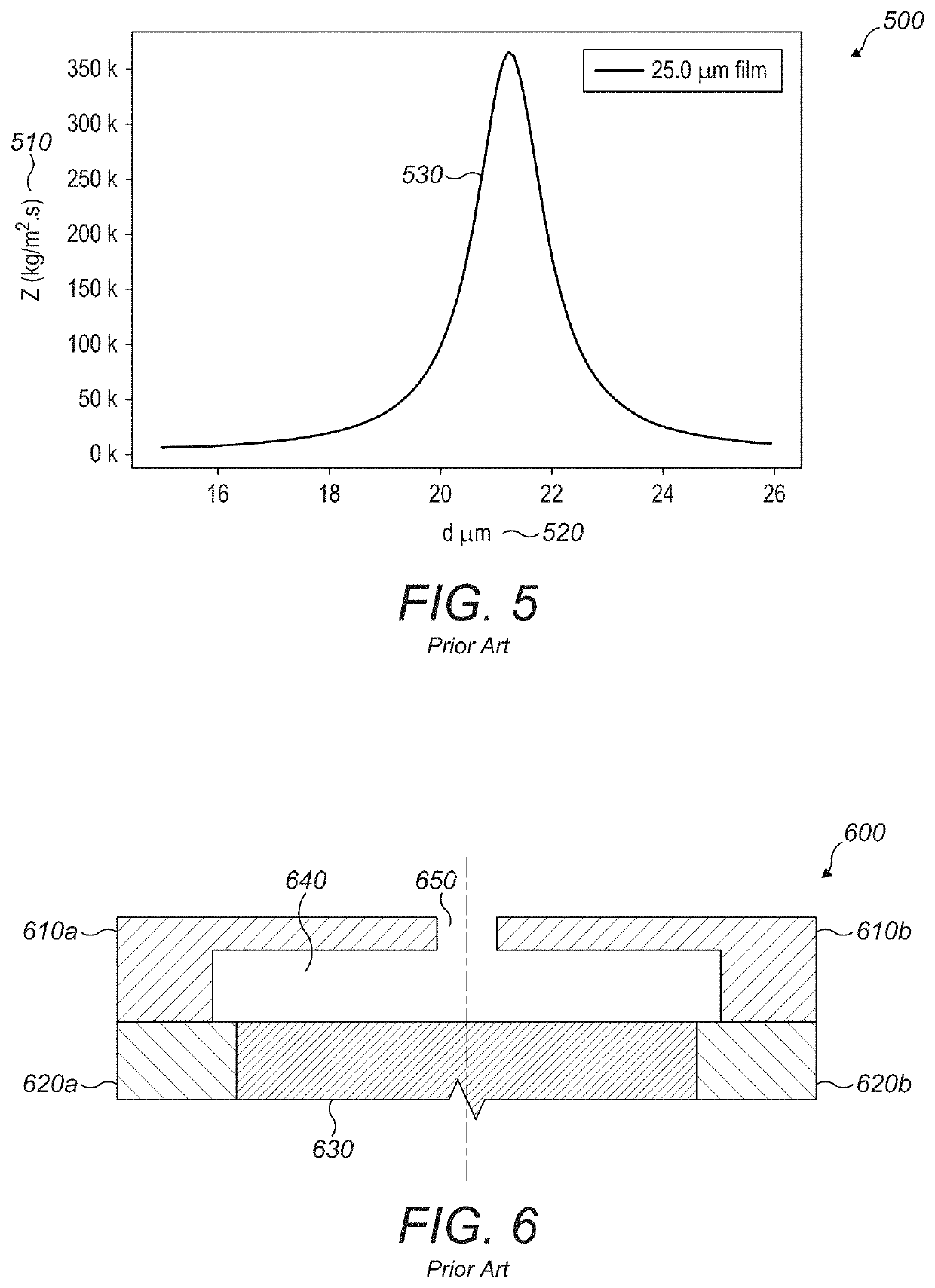Blocking plate structure for improved acoustic transmission efficiency
a technology of acoustic transmission and block plate, which is applied in the direction of positive displacement liquid engine, mechanical vibration separation, instruments, etc., can solve the problems of limiting the amount of acoustic energy emitted by the transducer, limiting the usability of applications that require a very thin or compact solution, and poor transmission of energy into the acoustic medium. to achieve the effect of increasing the transmission efficiency of the acoustic transducer
- Summary
- Abstract
- Description
- Claims
- Application Information
AI Technical Summary
Benefits of technology
Problems solved by technology
Method used
Image
Examples
Embodiment Construction
I. Acoustic Matching Layers
[0040]In this description, a transducing element directly refers to the portion of the structure that converts energy to acoustic energy. An actuator refers to the portion of the solid structure that contains the kinetic energy before transferring it to the medium.
[0041]The specific acoustic impedance of a gas or material is defined as the ratio of the acoustic pressure and the particle speed associated with that pressure, or
[0042]z=pu
[0043]This holds for arbitrary acoustic fields. To simplify this discussion, it is most useful to consider the plane wave solution to the above. This reduces the equation to scalar quantities,
z=ρc,
for a wave propagating in the same direction as the particle velocity, and where ρ is the density and c is the speed of sound of the medium. The importance of this quantity is highlighted when considering the reflection and transmission from an interface between two acoustic media with differing acoustic impedance. When a plane wav...
PUM
 Login to View More
Login to View More Abstract
Description
Claims
Application Information
 Login to View More
Login to View More - R&D
- Intellectual Property
- Life Sciences
- Materials
- Tech Scout
- Unparalleled Data Quality
- Higher Quality Content
- 60% Fewer Hallucinations
Browse by: Latest US Patents, China's latest patents, Technical Efficacy Thesaurus, Application Domain, Technology Topic, Popular Technical Reports.
© 2025 PatSnap. All rights reserved.Legal|Privacy policy|Modern Slavery Act Transparency Statement|Sitemap|About US| Contact US: help@patsnap.com



